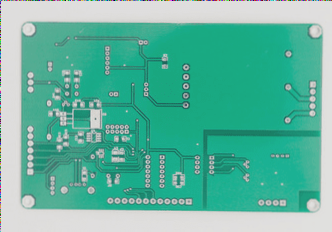High-Speed PCB Design
The importance of PCB design for high-speed circuit boards is becoming increasingly evident as the demand for faster and more complex electronic devices grows. High-speed PCBs are used in a wide range of applications, including data storage, telecommunications, and high-performance computing, to name a few.
Designing a high-speed board involves different considerations compared to a conventional PCB. The increased speeds and frequencies introduce new challenges, such as crosstalk, signal integrity, and power integrity. This article will briefly explore some critical design considerations and techniques for designing high-speed boards.

Power Integrity
Power integrity refers to the quality and reliability of the PCB’s power delivery system. At high speeds and frequencies, the power supply can introduce noise that interferes with signals. Although circuit boards still require power and ground planes, managing the power delivery network becomes more complex than simply connecting the power and ground pins of an IC. Each IC requires a precisely controlled power supply to meet its specific power requirements.
The power delivery network on a circuit board must provide stable voltage references and distribute power to all components while maintaining acceptable levels of noise and tolerance. This concept, known as power integrity, ensures that a consistent voltage level is maintained across all components on the board.
To minimize power integrity issues, follow these best practices:
- Place decoupling capacitors as close as possible to the pins that power the component to reduce noise from the power supply affecting the signal. Route decoupling capacitors with wide, short traces and place vias appropriately.
- Keep power traces as short as possible to ensure optimal routing between power pins and bypass capacitors. Use 45-degree or rounded corners for routing power supplies, and keep traces short, wide, and direct. Wider traces are essential to handle the increased current and temperature, reduce inductance, and prevent crosstalk.
- Carefully arrange the power and ground planes in a stack. Placing a power plane next to a ground plane provides a constant voltage reference, greater current-carrying capacity, lower voltage drop, better heat dissipation, and a shorter return path. Using a low-impedance ground plane is highly recommended. To minimize EMI, use solid ground planes instead of routing ground traces. This improves thermal management, power integrity, and signal integrity by ensuring clear signal return paths for sensitive high-speed transmission lines.
Signal Integrity
Signal integrity refers to the quality of the signals as they propagate through the PCB and components. As signal speeds increase, they become more susceptible to interference from crosstalk, impedance mismatches, ringing, and ground bounce. Signal degradation can occur at high frequencies and speeds due to reflections, crosstalk, and mismatched impedances.
These issues can lead to a loss of signal fidelity, resulting in transmission errors or system failures. Signal integrity problems may not be apparent during prototyping but can cause multiple failures during regular production, complicating the design process further.
To minimize signal integrity problems, follow these best practices:
- If a signal takes longer than a quarter of its rise time to travel along a trace, the trace may behave like a transmission line. To avoid signal reflections caused by impedance mismatches between the source, trace, and load, use controlled impedance traces that are matched to the transmission line impedance. This helps reduce reflections and ensures signal integrity.
- Minimize trace lengths. When high-frequency PCB traces are comparable in length to the signal’s wavelength, issues such as time delays, reflections, electromagnetic interference, and crosstalk may occur. These factors can significantly affect the performance of high-frequency circuits, so shorter traces help reduce signal degradation and parasitic effects (e.g., inductive or capacitive impacts on the signal).
- Proper trace routing techniques are essential. These include using vias, avoiding sharp corners, properly stacking signal layers, and maintaining consistent trace width. While vias are necessary for routing, they introduce added inductance and capacitance, which can cause reflections due to changes in characteristic impedance. Additionally, vias increase trace length, so it is advisable to avoid using vias in differential traces.
Crosstalk
Crosstalk occurs when unwanted electromagnetic coupling between traces leads to interference. Any conductor with a moving charge generates an electromagnetic field, which can cause noise and potential errors. Crosstalk becomes more prominent at high frequencies and speeds, so minimizing it is essential.
To reduce crosstalk, follow these best practices:
- Place a ground plane close to high-speed signal layers. This shields the signal traces and provides a constant reference plane, helping control the electromagnetic fields of the aggressor signals.
- To minimize broadside coupling, configure adjacent signal layers with preferred routing directions that cross each other, rather than running parallel. For example, if Layer 2 runs “north to south,” Layer 3 should run “east to west.” This optimizes the layer configuration and minimizes crosstalk.
- Avoid placing high-speed signals near other signals. High-speed signals can interfere with or be affected by neighboring signals, so it is important to maintain sufficient spacing between them.
Conclusion
High-speed PCB design requires different considerations compared to conventional PCBs. Understanding the challenges of power and signal integrity is crucial to ensuring the reliability of high-speed boards.
High-speed PCB design is a rapidly evolving and complex field. Whether you are an expert or a beginner in the PCB design industry, staying up-to-date with the latest trends and developments is essential. There is always more to learn.
If you have any questions about PCBs or PCBA, please feel free to reach out to me at info@wellcircuits.com



